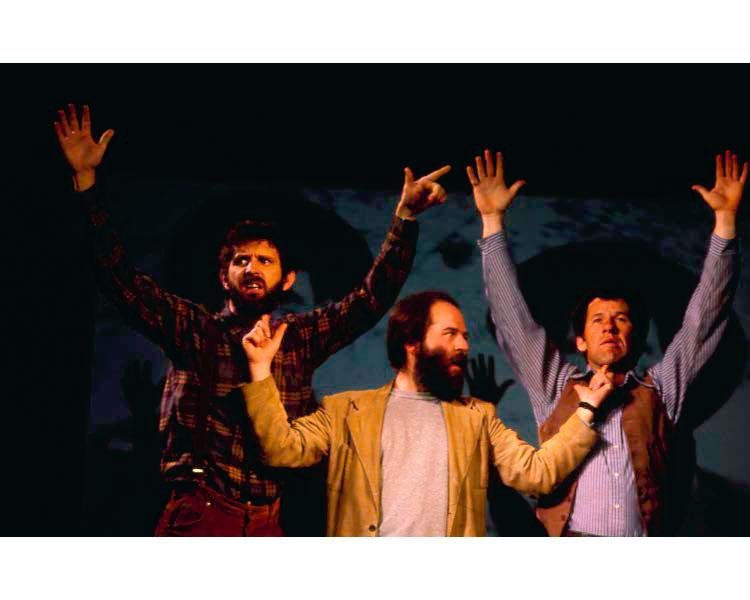
Red Fox/Second Hangin’
1976 - Roadside Theater
Red Fox/Second Hangin' is the true story of M.B. "Doc" Taylor, "the Red Fox" -- a red-headed, red-bearded, popular preacher, doctor, mystic, and U.S. marshall -- and the coming of the first coal boom to Central Appalachia in the 1890's. This 90 minute video, shot in 1982 at a live performance in Carcassone, Kentucky, aired on PBS stations nationally. The play was written by Don Baker and Dudley Cocke and performed by Don Baker, Gary Slemp, and Frankie Taylor. A production of Appalshop/Roadside Theater, the video was produced by Dudley Cocke, directed by Don Baker, and edited by Anne Lewis.
Commentary
-
“Red Fox/Second Hangin’ is as stirring to the audience for its historical detective work as for the vanishing art of frontier yarnspinning.”
The New York Times
-
“Red Fox/Second Hangin’ recreates, with great charm and visible passion, a part of this country’s past the entire nation can treasure. If its inspiration originates in Appalachia, its appeal is universal.”
Louisville Courier Journal
-
" . . . remarkable entertainment, the likes of which New York folks don't encounter every day."
The Christian Science Monitor
Red Fox/Second Hangin' is Roadside Theater's first full-length play created from historical events in the region. Written in 1976, it tells the story of M.B. "Doc" Taylor, the Red Fox of the Cumberlands. Taylor was a red-haired, red-bearded popular preacher, medical and herb doctor, religious mystic, and U.S. Marshall who was hanged for the ambush murder of moonshiner Iry Mullins and his gang in Wise County, Virginia in 1893.
The story takes place during a watershed moment in the region’s history when entrepreneurs from urban centers of capital in the U.S. and Europe were buying up Appalachian timber and mineral rights from the locals to establish an extractive economy that would dominate the region for the next 125 years.
Red Fox/Second Hangin' was pieced together from history books, old newspaper accounts, heretofore lost court records, and, most importantly, from conversations with older people who remembered the time and its vivid characters.
When the playwrights began their research, they expected the tales told by local folks about these events would be fanciful, colorful and entertaining, but not historically accurate. In the Wise County Courthouse attic, they discovered the court records of Taylor’s and his protagonist’s trials. When they compared these court documents to the stories that had been passed down orally within families, there was a match. The "official" history, written by the industrialists, was proven to be inaccurate.
The community came to see Red Fox/Second Hangin' to find out if Roadside had uncovered any new information about the murders and hangings that were still a topic of conversation. Audience members thought nothing about interrupting the performance to tell something they knew. In this way, the script continued to develop for the first year as local folks came, not as spectators, but to bear witness to their own cultural identity.
Red Fox/Second Hangin' toured locally and, eventually, nationally from 1976-1989, and was adapted for broadcast on PBS.





